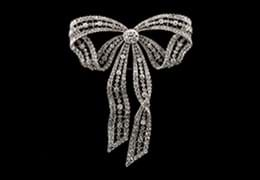Lot 199: Fine Clocks, Barometers and Scientific Instruments | 25 March 2025
A FINE AND RARE CHARLES II EBONISED TABLE CLOCK OF THE 'EDWARD EAST' SCHOOL
WILLIAM CRAYLE, LONDON, CIRCA 1665-1700
Est. £20,000-30,000 (+ fees)
The substantial twin fusee movement with plates measuring 8.25 by 7 inches united by six heavy double-knopped pillars pinned through the frontplate and secured with large cross-headed steel screws to the rear, and an additional seventh square-section pillar secured in a similar manner to the centre at the base, the trains with large diameter barrels incorporating pinned flanged caps and fat fusees, the going with reinstated verge escapement regulated by short bob pendulum incorporating knife-edge suspension to the single-footed backcock, the strike train with external rosette-centred numbered countwheel set on the fusee arbor, distinct cocked external locking detent and sounding the hours on a vertically orientated bell supported above the plates via an unusual serpentine-shaped stand screwed to the frontplate, the 8 inch square fire-gilt brass dial engraved with a central nine-petal rose bloom within a concentric band of intense tulip and other flowering foliage alternating with matted infill and incorporating a burnished pendant panel signed William Crayle, Londini at six o'clock, within applied narrow silvered Roman numeral chapter ring with very small stylised wheatear half hour markers and Arabic five minutes within the outer minute track, with scroll-pierced sculpted blued steel hands and the spandrel areas finely engraved with a symmetrical arrangement of radial leafy tulip blooms flanked by foliate floral sprays filling the quadrants continuing to meet and provide infill to the margins around the chapter ring between, the rectangular case finished with thick hand-cut ebonised veneers with substantial tied foliate bud cast hinged carrying handle to the flat top, within projecting cushion edge mouldings painted in various shades of brown to simulate repeating acanthus marquetry over complex moulded cornice moulding, plain frieze and conforming tightly cut architrave painted with a band of laurel leaves, the hinged front panel with glazed dial aperture opening to reveal veneered mask bordering the dial, the sides with tall rectangular windows and the rear with rectangular glazed door set within the frame of the unveneered flush fascia, on quarter-round and fillet moulded skirt base further painted with a larger band of laurel leaves to front and sides over bun feet.
41cm (16.25ins) high with handle down, 28cm (11ins) wide, 16cm (6.25ins) deep
Provenance:
The property of a private collector. Previously Sold at Christie's New York sale of THE CONNOISSEUR'S EYE - PROPERTY FROM THE ABBOTT-GUGGENHEIM COLLECTION 2nd June 2015, Lot 254, for $22,500.
William Crayle is recorded in Loomes, Brian Clockmakers of Britain 1286-1700 as probably the son of Richard Crayle. He was a watchmaker and a member of the Blacksmiths' Company in 1651, who took an apprentice, John Chatfield, in 1659; and another, Thomas Penn, in 1661. Loomes records his marriage to Elizabeth Alkin at St. Peter Paul's Wharf in 1658 and note that he was working in Fleet Street in 1662. The London Gazette posted in their 13th July 1676 issue a reward notice for a lost watch referencing 'Mr. William Crayle a Watchmaker at the Black Boy in the Strand, near the Savoy', and in 1683, his daughter, Francis, was married to William Rymer at St. Mary Savoy. He did not sign the oath of allegiance in 1697 so is thought to have died by then; although a watch signed 'William Crayle in Fleete Street, London' was raffled by Andrew Brown in Edinburgh the following year. Loomes notes that only one or two watches by him survive, hence it is most likely that the present clock is the only example by him known.
The dial engraving of the current clock is amongst the finest that is likely to be seen on a clock of this date and can be closely compared to that seen on an important early architectural longcase clock (in an oyster laburnum case) by Edward East which was sold at Christie's, London sale of PROPERTY FROM THE COLLECTION OF A NOBLEMAN 23rd May 2012 (lot 350) for £313,250. The intense but symmetrically laid-out tulip engraving to the spandrel areas are very close in their composition and are clearly executed by the same hand. The engraved signatures also match stylistically (most evident in the script for 'Londini'). Two others dials for clocks by Edward East, also exhibiting closely related engraving, are illustrated by Richard Newton in his article Dismantling the 'East School' - Edward East and the clock trade in seventeenth-century London printed in the June 2024 issue of ANTIQUARIAN HOROLOGY (pages 176-196) on pages 181 (Figure 7) and 182 (Figure 8). In the footnotes for the text (14) Richard Newton indicates that, with the exception of one anonymous example, this type of engraved spandrel pattern appears unique to Edward East. The engraved central rose and foliate ring decoration to the matted centre also appear in dials by makers of the 'East School', most notably for a clock by Samuel Haley illustrated by Newton on page 177 (Figure 1.).
The layout of the movement with symmetrical arrangement of seven pillars, large flanged spring barrels and fat fusees can be compared to a grouping of three clocks (two by John Hilderson and the example by Samuel Haley) illustrated by Newton on pages 177-78 (figures 2 and 4). The principal differences between this group and the present lot are the design of pillars used in the movement, and the positioning of the countwheel on the end of the strike fusee arbor (rather than towards the top right-hand corner of the backplate). Richard Newton surmises (for reasons outlined on page 179) that movements of this type are most likely to have been made in the Hilderson workshop, with some supplied to Edward East and other makers for finishing and retail. John Hilderson died of the plague in 1665, hence it is thought that some of his unfinished movements may have formed the basis of a few 'hybrid' clocks completed by East shortly thereafter (see Newton page 181 and Figure 7). The presence of a centrewheel (rather than remote 'floating' motionwork for the hands) would suggest that the present lot is more akin to this category of 'hybrid' clock, but completed by William Crayle rather than Edward East.
The unusual design of the movement pillars of the present movement, coupled with the method of fixing via pins at the front and large steel screws at the rear, is unusual but not unique. Indeed a table clock engraved with signatures for Edward East (in a later case) incorporating square-section double-baluster pillars affixed in this manner, was sold at Hutchinson Scott The New Year Fine Interiors Auction 24th January 2025 (lot 1119). From this it may be appropriate to suggest that for some ex-Hilderson workshop clocks, the movement pillars were substituted prior to completion, perhaps in order for the maker to add some of their own individuality to the movement.
The case of the present clock is interesting in that it has a flush back and has no veneers applied. The flush rear is a feature seen on the earliest architectural table clocks by Edward East and others (see Dawson, P.G., Drover, C.B. and Parkes, D.W. Early English Clocks pages 154, Plate 201; 158 Plate, Plate 206, and 160 Plates 207 and 209).
The mouldings applied to the cornice beneath the painted top mouldings are finely cut and laid-onto triangular backing as are those applied to the top edge of the skirt. The quality of these mouldings couple with flat rear and overall proportions would suggest that the case was originally constructed with an architectural pediment. If this is the case then it is probable that the large brass handle, cushion top mouldings (and possibly the painted decoration) were modifications executed to update the clock to follow the changing fashion for table clocks to be provided with carrying handles from the early 1670's onwards.
The present clock is a rare survivor made during the important 'first twelve years' of the pendulum being applied to timekeeping. In addition to this it is the only example known to have survived by an interesting enigmatic maker and, as such, it is of documentary importance adding to the ever increasing pool of knowledge relating to the important 'Edward East' school of clockmaking.
View page turning catalogue
Auction Details
Tuesday 25 March 2025 | 10.30am GMT
Donnington Priory, Newbury, Berkshire RG14 2JE
Browse the auction
Sign up to email alerts
VIEWING:
-
Viewing in Newbury:
- Friday 21 March: 10am-4pm
- Saturday 22 March: 10am-3pm
- Sunday 23 March: 10am-3pm
- Monday 24 March: 10am-4pm
- Tuesday 25 March: 9am-10.30am












